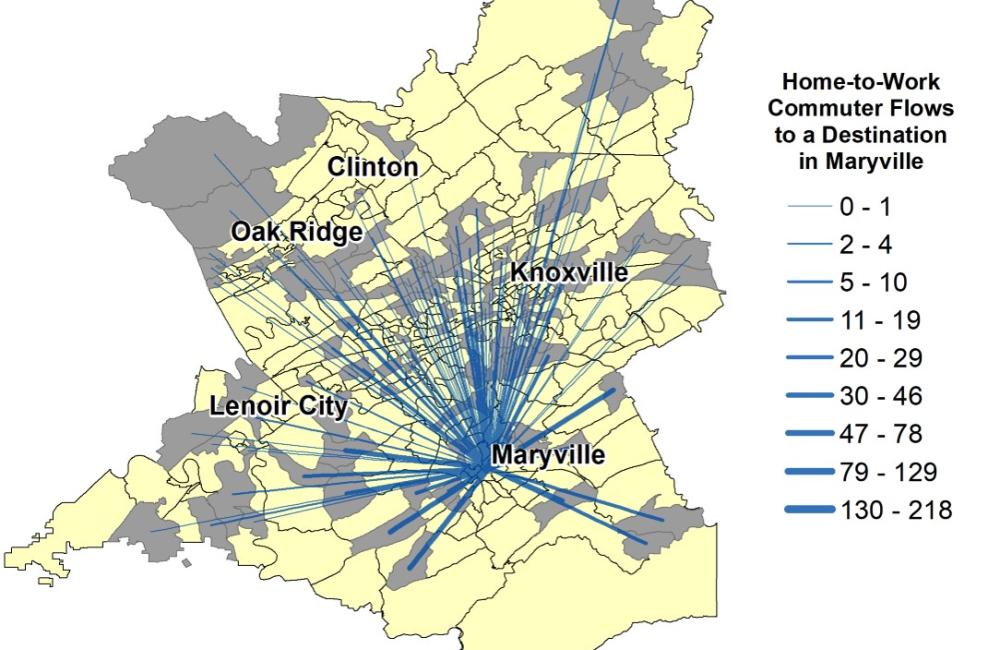February 4, 2019—Oak Ridge National Laboratory geospatial scientists who study the movement of people are using advanced machine learning methods to better predict home-to-work commuting patterns. Commuting models, which are based on publicly available information such as population and labor force data, can influence plans to reduce traffic and pollution and drive infrastructure choices. “Traditional commuting models are not able to easily accommodate new and different kinds of input data such as income and family structure,” said ORNL’s April Morton, co-author of a study presented at GIScience. “Machine learning models help overcome this barrier because the algorithms can easily accept new data, quickly re-train themselves and update predictions about commuting patterns.” Their study focused on a small region in East Tennessee, but the method could be applied anywhere in the United States.




